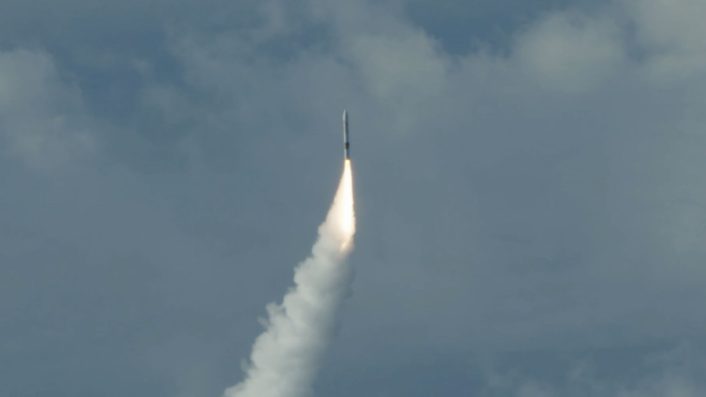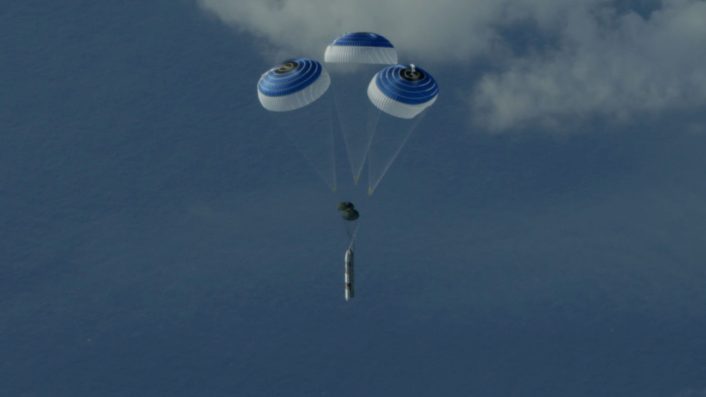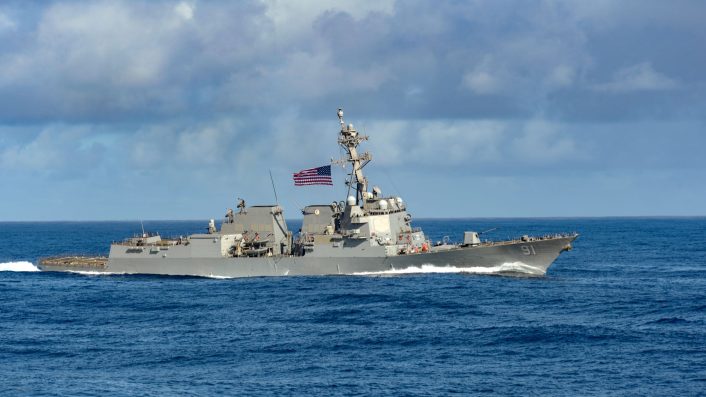The FTX-40 test, or “Stellar Banshee,” served as a validation for modern hypersonic missile tracking satellites, upgraded versions of the SM-6, Aegis’s ability to track hypersonic threats, and a new hypersonic test target.
Taking a further step towards obtaining a BMD (Ballistic Missile Defense) capability against hypersonic missiles, the MDA (Missile Defense Agency) and the U.S. Navy fired a simulated Standard Missile-6 (SM-6) at a target MRBM (Medium-Range Ballistic Missile) with an HTV-1 (Hypersonic Target Vehicle-1) front-end on Mar. 24, 2025. The test event took place at the Pacific Missile Range in Kauahi, Hawaii.
The MRBM was launched from a C-17 Globemaster III and was tracked by the Aegis Weapons System onboard an Arleigh Burke-class destroyer, the USS Pickney. The MDA explained that USS Pickney used the Sea Based Terminal (SBT) Increment 3 included in the latest Aegis software baseline to detect, track and simulate the engagement of the target.
The event was designated Flight Test Other (FTX-40) and called “Stellar Banshee”. Described as a “significant step in advancing defenses to counter hypersonic threats,” the test served as a “data collection opportunity” to test the ability of space assets to pass information “that was processed through fire control and then provided to the ship for their simulated Aegis engagement of the target.”
The test served as a validation platform for a variety of systems, including modern hypersonic missile tracking satellites, upgraded versions of the SM-6, the ability of the AWS to track the hypersonic target, and a new hypersonic test target.

“Our ability to defeat maneuvering, hypersonic missiles is critical if we are to defend our homeland and our forces against an increasingly dangerous threat,” said MDA Director Lt. Gen. Heath Collins. “The Aegis Weapon System will play a vital role in the next-generation integrated air and missile defense system, and today’s test demonstrated key achievements as we continue to partner with the Navy in advancing our Nation’s counter-hypersonic capabilities.”
The test
The C-17 Globemaster III was mentioned in the image captions accompanying the MDA’s press release, but not in the press release itself. The aircraft is also not seen in the images, which only show the target after being released. This was similar to the first live BMD test from Guam on Dec. 10, 2024, where an SM-3 intercepted the MRBM target released from a C-17.
The images released show the hypersonic test target separating from the cradle that is used to roll it off the ramp of the C-17 helped by drogue chutes, before the target missile ignites its solid-propellant motor. As the target flies away, the cradle slowly descends towards the ground.

BMD (Ballistic Missile Defense) exercises testing the Aegis weapons system and using the Standard Missile series are called the Flight Test Aegis Weapons Systems (FTM), while the vehicles they are used against are identified as ARAVs (Aegis Readiness Assessment Vehicles). Three variants of ARAV are currently available, which differ in their range, on-board guidance and rocket motors to simulate short, medium and intermediate range ballistic missiles.
Usually, the ARAV-B and C variants are used to represent short-range targets, while at least one known ARAV variant, the ARAV-TTO-E, has been used as a “separating medium-range” target. An Aug. 6, 2024, a CRS (Congressional Research Service) report identified other “separating” and “non-separating medium range” targets used in several tests since 2012.
Here, however, an entirely different test vehicle was used to carry the HTV-1. As the MDA notes, FTX-40 was a “key risk reduction flight for the new MDA-developed test target and a data collection opportunity for the Aegis baseline against a hypersonic representative target.”

Hypersonic front end
The design of the HTV-1 on the tip of the target MRBM is not known. Generally, the nose casing carries the distinctive hypersonic warheads, where usually the top half is sharply angular and the bottom half is flat. In the ‘boost-glide’-type hypersonic weapons, the nose casing of the carrier rocket splits open before releasing the hypersonic weapon just outside of the earth’s atmosphere. These are also called HGVs (Hypersonic Glide Vehicle).
It is possible that the event might have been designated as Flight Test Other-40 (FTX-40) to reflect the fact that Stellar Banshee only involved the simulated launch of a SM-6. The statement subsequently announced a future live intercept of an MRBM with HTV-1, and designated that future trial as Flight Test Aegis Weapon System-43 (FTM-43), which would be based on the data and experience gained in FTX-40.
Other goals
FTX-40 also provided a “data collection opportunity” for the Hypersonic and Ballistic Tracking Space Sensor (HBTSS) demonstration satellite. As part of the HBTSS, developed in collaboration between the MDA and the Space Development Agency, a constellation of six small satellites was launched on Feb. 15, 2024, on a SpaceX Falcon 9 rocket.
HBTSS satellites would be cued by the Space-Based Infrared System (SBIRS) that detect infrared plumes from missile launches. The HBTSS sensors would track missiles in their high-speed glide phase, then pass targeting coordinates to the US Navy’s Aegis BMD system & Army’s THAAD pic.twitter.com/OFiTb7eWv0
— James Simpkin (@jw_simpkin) November 16, 2021
The satellites will reside in low Earth orbit, or LEO, about 1,200 miles above the planet’s surface, and have been designed to track dimmer targets like hypersonic weapons, that ‘skip’ over the earth’s atmosphere, and fast maneuvering, flying unpredictable trajectories.
Interestingly, the MDA adds that FTX-40 itself “builds on the success of FTM-32, an SBT Increment 3 flight test experiment.” Conducted on Mar. 28, 2024, the test “demonstrated the capability of an Arleigh Burke-class destroyer to detect, track, engage and intercept an MRBM target in the terminal phase of flight with an SM-6.” Also called “Stellar Laelaps”, that test saw an Advanced Medium Range Ballistic Missile Target being launched from the Pacific Missile Range.








